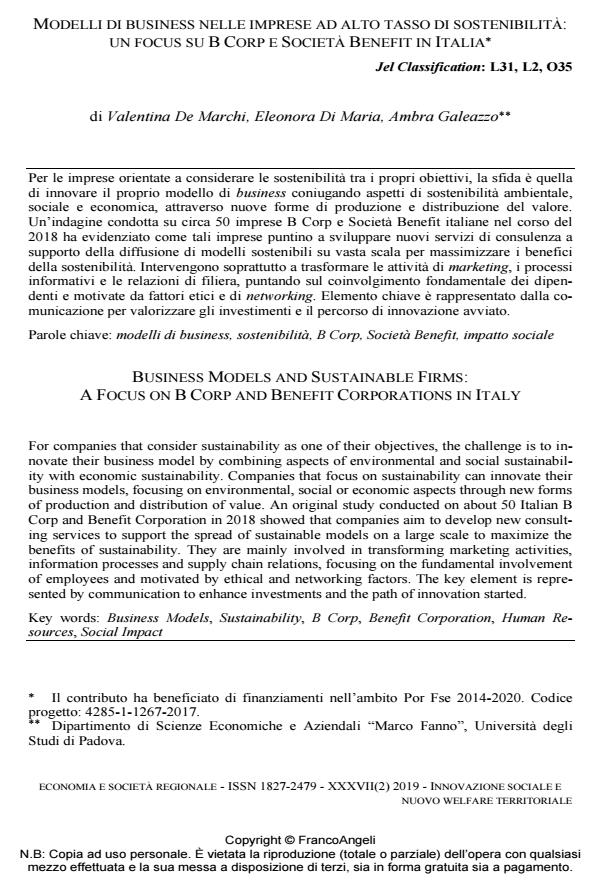Business models and sustainable firms: a focus on b corp and benefit corporations in Italy
Journal title ECONOMIA E SOCIETÀ REGIONALE
Author/s Valentina De Marchi, Eleonora Di Maria, Ambra Galeazzo
Publishing Year 2019 Issue 2019/2
Language Italian Pages 11 P. 85-95 File size 245 KB
DOI 10.3280/ES2019-002008
DOI is like a bar code for intellectual property: to have more infomation
click here
Below, you can see the article first page
If you want to buy this article in PDF format, you can do it, following the instructions to buy download credits

FrancoAngeli is member of Publishers International Linking Association, Inc (PILA), a not-for-profit association which run the CrossRef service enabling links to and from online scholarly content.
For companies that consider sustainability as one of their objectives, the challenge is to innovate their business model by combining aspects of environmental and social sustainability with economic sustainability. Companies that focus on sustainability can innovate their business models, focusing on environmental, social or economic aspects through new forms of production and distribution of value. An original study conducted on about 50 Italian B Corp and Benefit Corporation in 2018 showed that companies aim to develop new consulting services to support the spread of sustainable models on a large scale to maximize the benefits of sustainability. They are mainly involved in transforming marketing activities, information processes and supply chain relations, focusing on the fundamental involvement of employees and motivated by ethical and networking factors. The key element is represented by communication to enhance investments and the path of innovation started.
Keywords: Business Models, Sustainability, B Corp, Benefit Corporation, Human Resources, Social Impact
Valentina De Marchi, Eleonora Di Maria, Ambra Galeazzo, Modelli di business nelle imprese ad alto tasso di sostenibilità: un focus su b corp e società benefit in Italia in "ECONOMIA E SOCIETÀ REGIONALE " 2/2019, pp 85-95, DOI: 10.3280/ES2019-002008